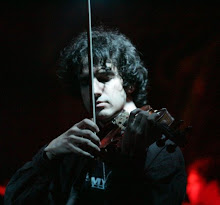 Christie´s
Christie´s Sotheby´s
Sotheby´sWhy is late Picasso enjoying a surge in demand?
The result of a “tough gathering season”, as Christie’s Thomas Seydoux put it, the auctions were well-pruned affairs featuring respectable works at relatively modest prices. Collectors have a particularly strong attachment to their masterpieces in times of trouble; it’s much easier to part with works when auction houses offer guarantees. This week, the only work singled out for a guarantee—specifically, an “irrevocable bid”, the newer, happier term used to describe a third-party guarantee—was a 1969 painting by Pablo Picasso.
To the relief of that anonymous guarantor, “Late Picasso” was one of the week’s success stories. Both Christie’s and Sotheby’s offered paintings titled “Homme à l’épée”, which featured a sword-carrying musketeer painted by Picasso in his 88th year. Christie’s slightly larger, predominantly white canvas had been acquired in 2005 for £2.7m. It sold on Tuesday for £5.8m. A nice return. Sotheby’s mainly red oil on board, which had been used on the poster of an important Avignon exhibition, achieved the even higher price of £7m on Wednesday.
Why, contrary to the general slide in art prices, is late Picasso enjoying a surge in demand? Helena Newman of Sotheby’s says, “Twenty years ago, works from the Blue, Rose, Cubist and Classical periods were considered the art historical pinnacle and the height of what collectors wanted. Now there is a broader focus on the full range of Picasso's work: the portraits of Dora Maar and Marie Therese, the still lives of the 1940s, the late paintings.” She adds, “Picasso is unrivalled in having produced great works in every decade of his creative output.”
Olivier Camu, a Christie’s specialist, suggests that these works are a stylistic bridge between modern and contemporary art that attracts crossover buyers. “Whereas classic Picasso collectors tended to turn up their nose at the late works, collectors of Abstract Expressionists and even 1980s expressionists like Jean-Michel Basquiat are attracted to both the aesthetics and relatively reasonable prices of these big, bold, colourful pictures.”
Giovanna Bertazzoni, Co-Head of Impressionist and Modern at Christie’s, points to a flurry of big museum shows and identifies a general curatorial re-evaluation of the artist’s oeuvre. Previously the 1960s paintings had been perceived as the childish scribbles or doddering fantasies of an old man warding off impotence. However, essays such as “Peace and Love Picasso” by Dakin Hart, which was published in a recent Gagosian Gallery catalogue, argue that the musketeer paintings were not only in dialogue with old masters such as Rembrandt and Velasquez, but with the youth of their time. Picasso, a pacifist since his “Guernica” days and the kind of free-spirit to empathise with the Summer of Love, developed his own pictorial “Musketeer Counter-culture,” according to Mr Hart.
The taste of a younger generation would seem to be integral to understanding the fashionability of late Picasso. “Younger collectors want paintings that are informal, splashy, less academic,” suggests Gabriel Safdie, a Geneva-based dealer. “They are not interested in sombre easel painting or dry Cubist exercises.”
The musketeer on the block at Sotheby’s was acquired by Samir Traboulsi, a Lebanese financier, while Christie’s swashbuckler was purchased by David Nahmad, a currency trader and powerful art dealer. With his family, Mr Nahmad owns several hundred Picassos, and has been buying late Picassos since the early 1970s when they sold for $40,000-50,000. “Blue period, Dora Maar, Marie Therese... it’s like Mayfair, Chelsea and Knightsbridge real estate,” says Mr Nahmad. “There are fashions but, overall, everything goes up.”
In the past, the Nahmads have been suspected of supporting the price of Picassos at auction in order to maintain the value of their inventory. “All manipulators lose money,” counters Mr Nahmad. “If I died tomorrow, the Picasso market would go on.” He is so passionate about the artist's work that he loves buying Picassos that he has owned before. “The art market is something for beauty and intelligence,” he says. “It’s not supposed to be a casino.”
Jun 27th 2009
From Economist.com

Nenhum comentário:
Postar um comentário